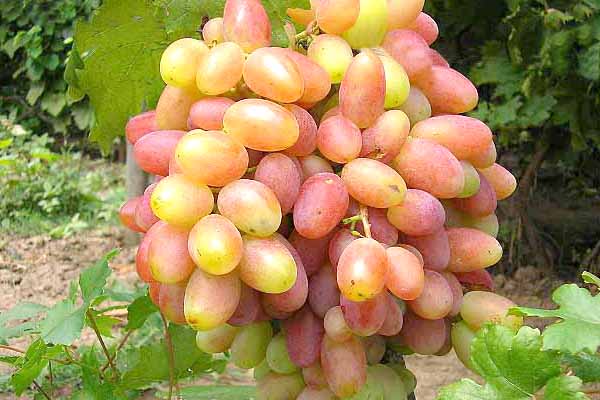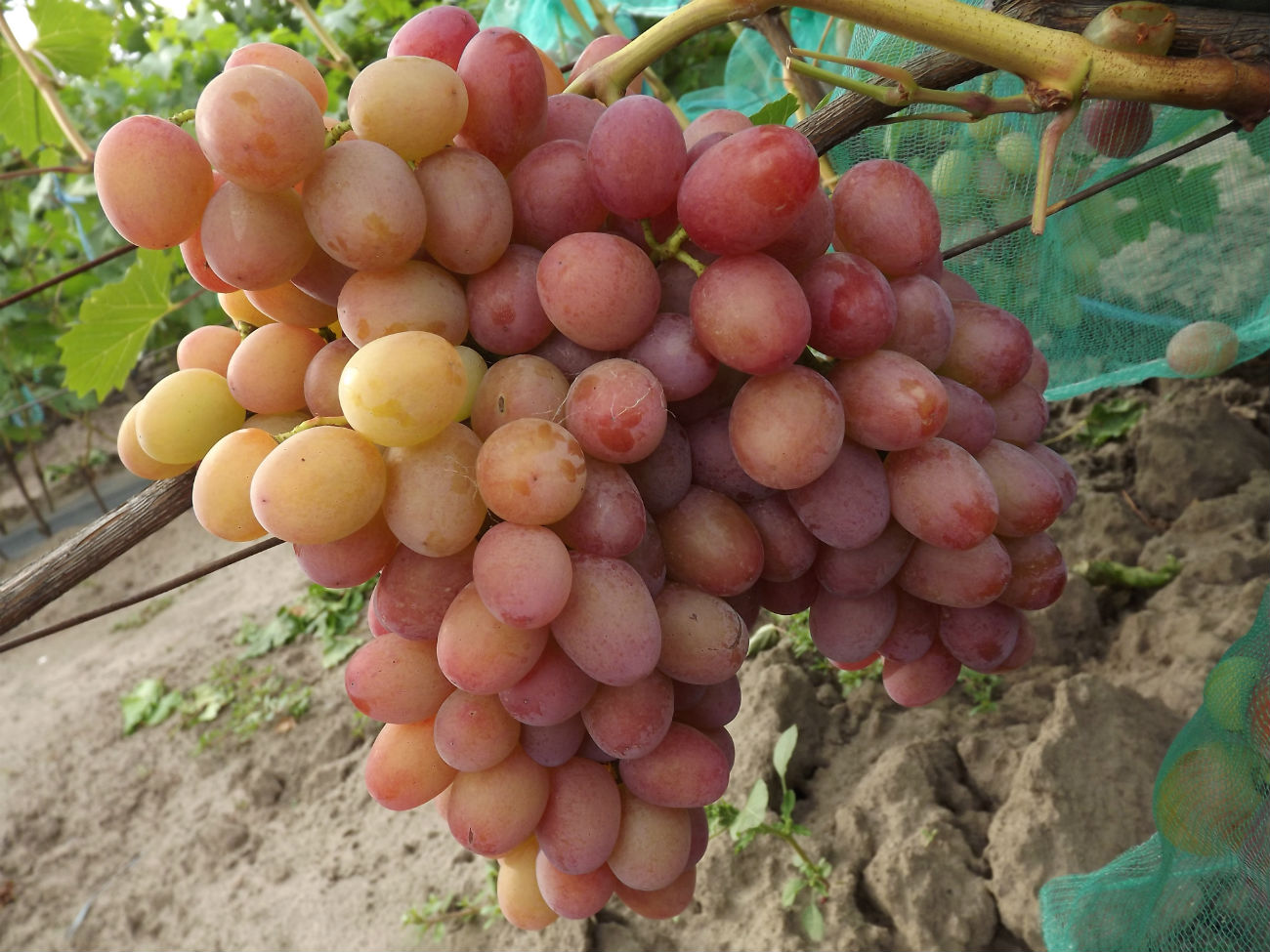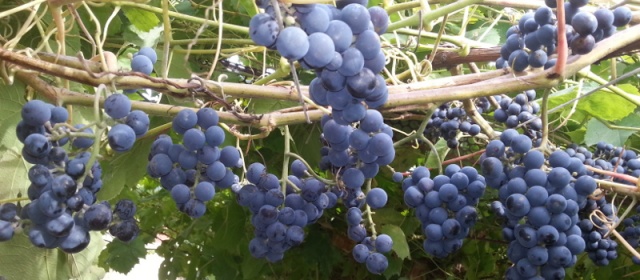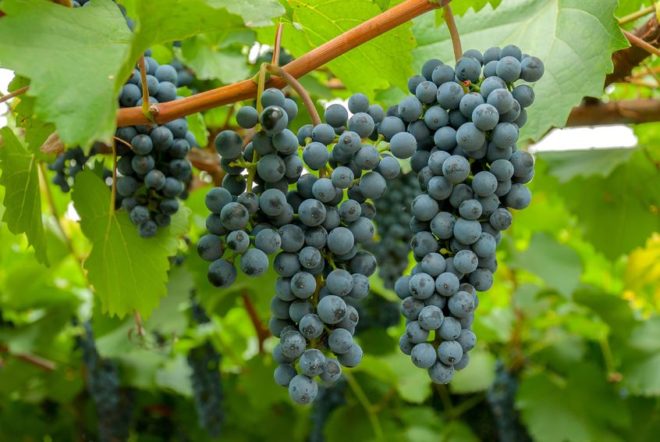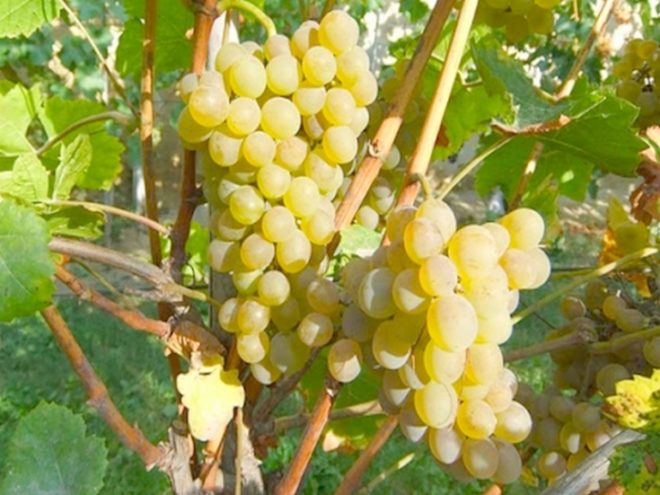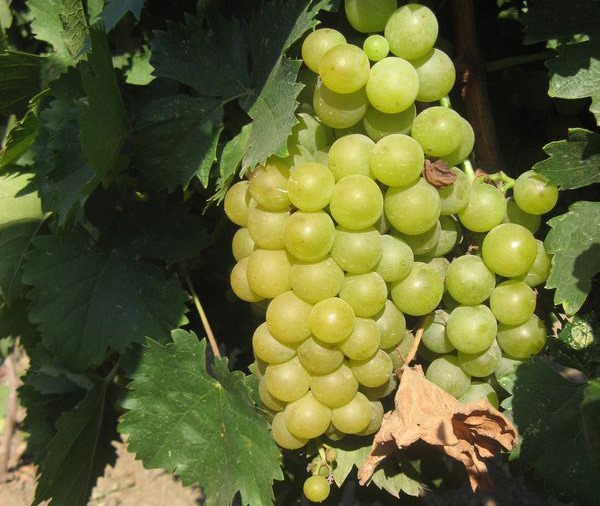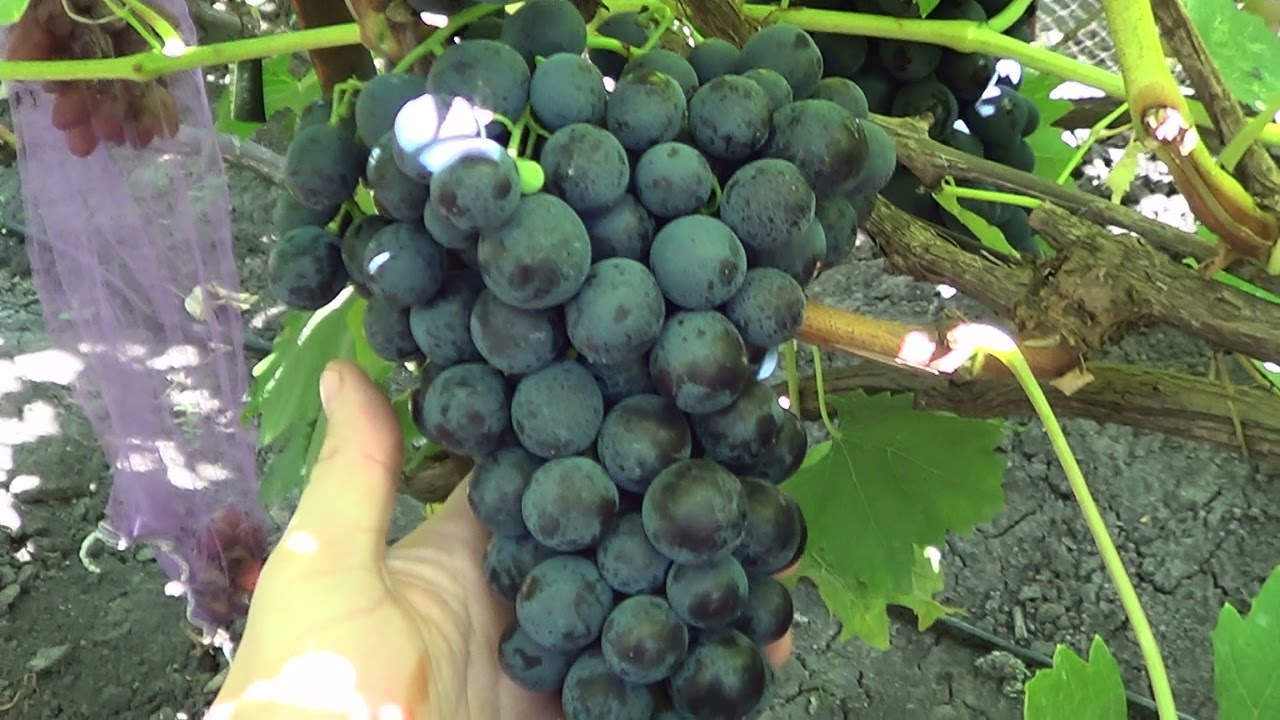Content:
The anniversary of Novocherkassk is a representative of early ripening grapes, stunning not only for its color, but also for its taste.
History
The grape Jubilee of Novocherkassk, a description of which will be given below, was bred 14 years ago by the famous amateur winegrower N.V. Krainov. Among experts, the variety has been known only since 2014. "Parents" - Radiant Kishmish and Talisman. The hybrid received from the "parents" fruits of impressive size and unique taste, making it popular among gardeners.
Characteristic
A detailed description of the Yubileiny grape variety says that it has a branched stem system with strong, thick and fast-growing branches. The foliage of the described variety is large and dark green in color. The bunches on the tassels are large and conical in shape.
The Jubilee grape is considered to be early maturing and ripens 4 months after flowering. The beginning of the growing season falls on the last decade of May - the first days of June. The berries are large, oval in shape: up to 4 cm in length and up to 5 cm in circumference. The load on one hand can be from 1 kg to 3 kg. The weight of one berry is from 12 to 15 g.
The skin and pulp of the grapes are firm. The flavors range from bland to mildly sweet. Among the tasters, Novocherkassk Grapes receives 8.9 points on the sugar content scale. The color of the berries ranges from white to pink. A red or purple tint is rare.
Jubilee Novocherkassk grapes are used:
- for making juices and wines;
- for blanks;
- for fresh consumption.
Planting grapes
Reproduction of Novocherkassk grapes Yubileiny can be done in several ways:
- vaccination;
- sapling;
- seed.
During the planting process, you need to choose a place that is comfortable for the plant. Be sure to prepare stakes that will be used as a support. It is recommended to dive a grape sprout into open ground in the second decade of April at a temperature not higher than 15 degrees Celsius. The earth must have a temperature of at least 10 degrees.
Site selection and preparation
When choosing a place for Novocherkassk grapes, it is advisable to consider the sunny sides of the site with no draft. A wall of a house or a fence can be a good option - when choosing this place, you need to step back from the building in order to ensure the free development of the root system.
When the place for the future vineyard has been chosen, it is necessary to weed and remove debris 30 days before planting.
After cleaning the area, prepare holes 50 cm deep, at a distance of 2.5-3 m from each other. Put fertilizers in the recess that provide good nutrition for the seedling, black soil or sand. To eliminate the risk of erosion of the grape sprout by groundwater, put pebbles or straw at the bottom of the hole. If there is a lot of clay in the soil, it is necessary to add silt.
Planting seedlings
When planting seedlings, you should straighten the root system and carefully plant it in place.After planting, cover the roots with earth and water with water, making sure that the moisture completely goes into the ground. Dig in a stake next to the plant for further tying. Early installation of the post is necessary to avoid the risk of damage to the root system of the grapes in case of late penetration of the soil next to the plant.
Planting by cuttings
In the case of planting by cuttings, the grafted plant should be cut to 3 mm and placed in water or in a growth-stimulating liquid one day before the procedure. When the stalk gives roots, it is recommended to treat it with paraffin. This procedure is necessary to retain water in the plant and prevent further drying of grape cuttings.
To prepare the bush for grafting, it is advisable to cut off the old branches, and clean the remaining bush of dirt and separate the stem of the vine to connect it with a new sprout. Finishing the grafting process, you need to wrap the junction with polyethylene and put clay under it.
In order for the plant to take over faster, it should be watered abundantly: 2 - 3 ten-liter buckets in one approach. In the process of watering, it is necessary after each bucket to make sure that the water has left and only then pour a new portion.
The first time it is necessary to water the grapes during the budding period, however, the plant should not be poured in order to avoid rotting of the root system.
Vine care
To preserve the harvest, it is advisable to cover the bushes with a net or hang bags with odorous herbs on them, the smell of which is not tolerated by insects.
In addition, it is recommended to do the following:
- ensure uniform watering depending on the climatic conditions of a particular region of vineyard growth;
- put straw or ash 3 cm high around the bush for insulation 5 days after planting;
- apply fertilizers once a month, which should include about 20 g of potassium and 40 g of superphosphate;
- spray with solutions that reduce the risk of disease;
- pruning and shaping the bush in the spring and autumn;
- shorten sprouts to the first bud once a year;
- reduce the number of brushes on the vine to one, providing good ventilation and lighting of the fruit;
- cut the vines after 10 buds and tie up the remaining branches vertically to lighten the bush;
- periodically weed and remove fallen berries and leaves.
Preparing for winter
Frost resistance of Jubilee grapes is average - up to -23 degrees Celsius, it can winter without shelter. But with a further decrease in temperature, it will definitely suffer.
In the process of preparing for winter, it is advisable to form a bush by cutting off unnecessary stepsons and old branches. After giving the desired shape, lay the plant in a horizontal position, placing straw under it and on it. Sprinkle only ash on the sides. At the same time, it is not recommended to cover the grapes with earth or snow, as there is a risk of infection with various diseases. After the first covering layer, install a frame for the greenhouse so that the weight of the material does not break the bush. Cover the frame with burlap, tarpaulin or roofing felt.
Collection and storage of fruits
A perennial plant can yield up to 20 kg of yield. The berries are recommended to be picked in the first decade of August. Particular attention should be paid to the collection time - it should take place in the morning: after dew, but before direct sunlight.
When preparing the crop for long-term storage, it is advisable to cut branches from bud to bud, making the cut even and inclined. In the process of separating the branch from the bush, it is not recommended to touch the berries with your hands, so as not to damage the protective layer.If damaged or rotten fruits are present, they must be removed to keep the remaining berries healthy.
Put potato tubers at the ends of the branch to keep moisture inside the stem and the freshness of the grape berries. In order for the stem of the Jubilee grape to be green as long as possible, the potatoes must be changed at regular intervals. In the process of changing the vegetable, it is necessary to trim the ends of the branch. After finishing the preparation of the branch for storage, it must be suspended on stretched fishing lines.
Disease prevention
As a preventive measure, you need to spray the plant with Bordeaux liquid once a month (before flowering). This is done to reduce the risk of powdery mildew. In addition to irrigation, good lighting and ventilation should be provided for the crop.
In the event of the first signs of a fungal disease, immediately treat the bush by removing the infected parts. If unhealthy plants are present, it is recommended to eliminate or isolate them from healthy ones.
Pros cons of the variety
Among the advantages it is worth noting:
- large-sized harvest;
- early harvest time;
- fruiting one year after planting;
- the possibility of growing on an industrial scale;
- long shelf life - can be up to 240 days;
- strong immunity;
- sugar content 8.9%;
- good taste.
The disadvantages include:
- low frost resistance;
- must be put into hibernation for the winter;
- a favorite delicacy of wasps and feathered representatives of the fauna;
- constant manual formation of the bush is necessary;
- a decrease in the juiciness of berries with a large number of brushes on a branch;
- poorly adapts after pinching;
- picky about weather conditions.
Summing up, it is worth noting that the described grapes can be easily grown at home. And for the observance of the elementary rules of care and planting, the plant will thank you with a good harvest.
